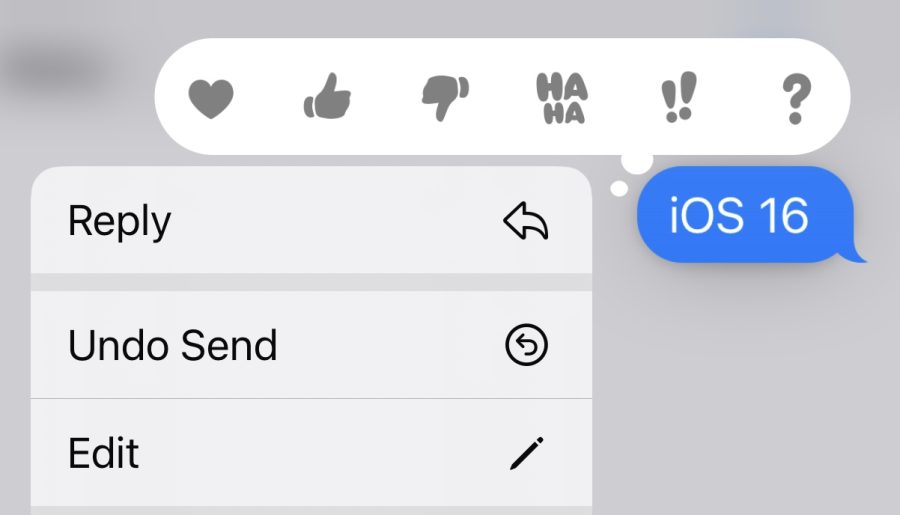iOS 16: optimal personalization, major disappointment
Photo provided by: Abby Roberson
iOS 16 allows users to “Undo Send” and “Edit” their text messages.
October 13, 2022
Sept. 12, marked one of the year’s most highly anticipated days for iPhone users: Apple’s release of iOS 16. Every year, people wait excitedly for Apple Inc. to release a new model of their iOS operating system, each model promising exquisite additions to the face of Apple devices. As one of the many excited iPhone users, I rushed to my settings app to download the new update. However, I was quickly met with an array of disappointments.
One of the most advertised aspects of iOS 16 is the ability for users to personalize their devices. Wallpapers can now be decorated with widgets. Screens can be modified to the pleasure of its user: colors, fonts, designs simply changed with a tap. However, beneath the aesthetic face of the new iOS system, behind the pledge to personalization, lie the many faults of the new operating system.
To begin, Apple sacrificed their original, convenient notification system to attempt a more aesthetic design. Before iOS 16, notifications were a simple affair. Users would be notified through a ring and their message would appear at the top of their home screen, within easy viewing vicinity. However, iOS 16 has stripped its users of any feasibility when it comes to notifications. Texts and other messages now appear at the bottom of the lock screen— if at all— tucked away from sight. Why should practicality ever be negotiated for looks? Though I understand Apple’s attempts to please the generations of “aesthetic-driven” individuals, they have sacrificed the integrity and appreciability of their notification system in doing so. Notifications belong on the top of the lock screen, like they have always been. The good days of practicality have been washed away by iOS 16, and its prioritization of visuals over effectiveness. While users are given the ability to change their notification “stack style,” the physical placement of the messages are out of their control. If Apple preaches “Personal is Powerful,” then why can’t users personalize the location of notifications on their homescreens?
Another big change brought by iOS 16 is the ability to alter sent texts allowing users to edit and unsend messages. While I can appreciate the ability to edit sent messages in a typo-prone world, the option to unsend a message raises concern. In a highly computerized society, texts are a way to communicate freely with other people. Unfortunately, text messages can also be used to harass and bully. With the iOS 16 “unsend message” feature, users now have the ability to erase any message they send from not only their phone, but the person they are sending their message to. If an iMessage user is being harassed by another iMessage user, and the harasser deletes the text message, then the victim is left without any evidence of wrongdoing on the sender’s (or unsender’s) part. The ability to unsend messages leaves room for vulnerability in many iOS users. This feature of iOS 16 is very manipulative, and raises a level of distrust that I cannot rationalize.
Apple’s slogan for their iOS 16 update claims that “Personal is Powerful,” but frankly, there is nothing powerful about their new iOS system at all. Despite Apple’s attempt at customization galore, I cannot help but feel betrayed by the invasive new features accompanied by the installation of iOS 16.







Julia Hubbell • Oct 20, 2022 at 8:09 am
ABBY I LOVE YOU